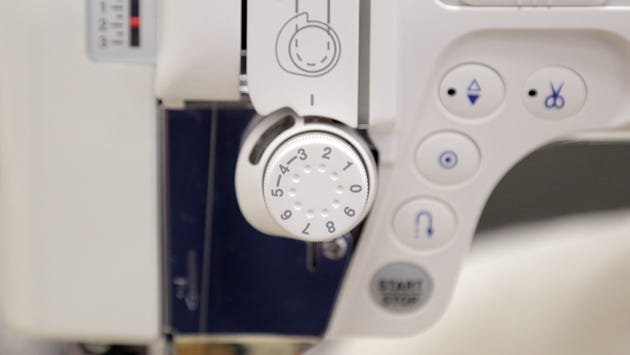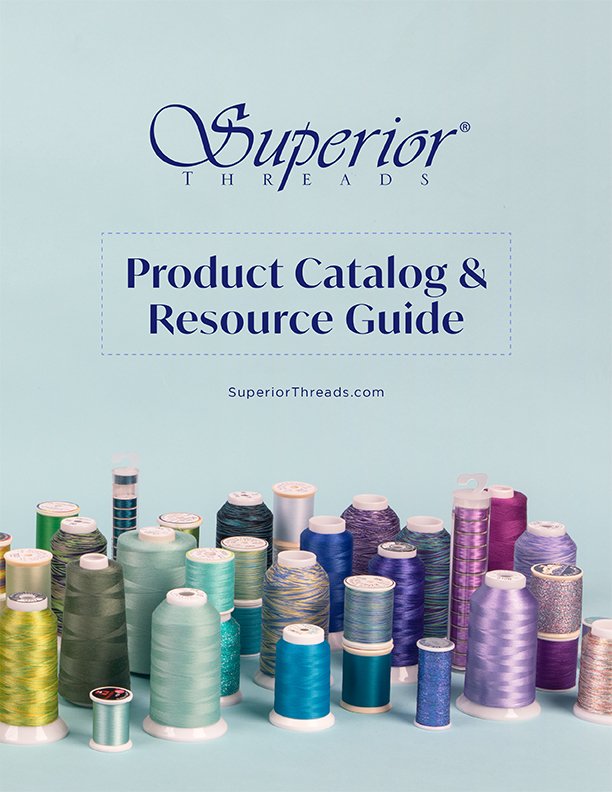Superior Education
TENSION TRAINING
- TOP TENSION
- BOBBIN TENSION
- TENSION ADJUSTMENTS
A story about dogs and tension
We have a Golden Retriever. She loves our granddaughter, was easy to train, is very eager to please, obedient, and loves everything we do. Our neighbor has a Dalmatian which is rather high strung and not yet properly trained. Unless trained, some dogs cause a lot of frustration. Sewing machines and longarm machines are like dogs. Some require very little training, love any thread we give it, and cause very few problems. Other machines are temperamental, high maintenance, and require a lot of attention and training before they serve us well. If we learn how to train (adjust) the machine, it will serve us well and bring much happiness. An untrained machine can cause more frustration than joy.
Making the perfect stitch is the goal of all sewing.It is perfectly fine to use different threads in the top and the bottom, whether they be different fiber types (for example, cotton and polyester) or different thicknesses. Adjustments for these differences are made with the tension settings, usually only to the top tension on home machines but to both top and bottom on longarm machines.
For home machines, the training is usually quite simple:
- Use the best quality thread.
- Use the proper needle style and size.
- Sufficiently adjust (usually loosen) the top tension
Machines differ in top tension among machines but it seems that the recent trend is to make tighter-tensioned machines and that can be frustrating. Learning to adjust the top tension setting, even if your machine claims to be automatic, is very important. Most machines are factory set too tight to successfully sew with decorative, delicate, sensitive, or medium/heavy threads without loosening the top tension setting. On a scale of zero (no tension) to 10 (highest tension), most factory tension settings are in 5.0 range. That is OK if we use a 50 or 60 wt. polyester thread (the kind we use for sewing clothing or crafts) but it is too tight for most other threads. The most common tension range we use for other threads is between 2.0 and 3.5 so this requires adjusting the tension setting. For a chart of recommended needles and tension settings for threads used on home machines, please see our Thread Reference Guide.

Our golden retreiver puppy

Sewing machine tension knob
Longarm machines.
Some longarm machines require extra training. Don’t give up. It is possible to have a machine that loves to serve its master by successfully running a wide range of good quality threads. If you have experienced problems running metallic, monofilament, trilobal polyester, or other delicate or sensitive threads, this scenario might sound familiar: I loosen the top tension so the thread does not break but it is so loose it loops on the back. If I tighten the top tension to get rid of the looping, the thread breaks.
This is a common problem with many longarm machines. The problem is that the top tension and bottom tension are too far out of balance so no matter what we do to the top tension, it will not solve the problem. In order to fix this, we must loosen the bobbin tension also. Many of us were taught to never touch the bobbin tension. That was when thread choices were very limited and decorative threads hadn’t yet been created or used on high speed and longarm machines. Times have changed. If you can thread a sewing machine, you can successfully adjust the bobbin tension.
There is no need to spend money on a second bobbin case. With a permanent marker, put a dot where the tension screw is now pointing to so you can always return to the original setting. Then, with a screwdriver and thinking of a clock, make adjustments by turning the screw equivalent to what a 15-minute movement would be (1/4 turn). Counterclockwise loosens the tension (the most commonly required adjustment) and clockwise tightens the tension. Remember, lefty-loosey, righty-tighty.
For longarm machines, the bobbin tension should be loose enough that if you hold the bobbin case in your left hand and pull the thread up with your right hand, the bobbin case should not lift off your left hand. The old 4-inch drop test is gone. Bobbin tension gauges are available and worthwhile. They allow you to measure and then make note of the best bobbin tension for each thread. Our Longarm Reference Guide will help you adjust your tension according to the thread being used.
By running fairly loose and balanced top and bottom tensions, you will be amazed how well your machine behaves. Training is not difficult. Just as a well trained dog is much more fun than an untrained dog, so it is with a well trained machine. You paid a lot for your machine. It can and should serve you well.

 View Our Product Catalog
View Our Product Catalog